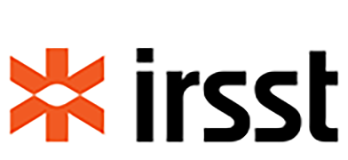Comparison of the performance of ITS1 and ITS2 as barcodes in amplicon-based sequencing of bioaerosols
Type de document
Études primaires
Année de publication
2020
Langue
Anglais
Titre de la revue
PeerJ
Résumé
This paper presents the performance of two eukaryotic genomic ribosomal regions, ITS1 and ITS2, in describing fungal diversity in aerosol samples using amplicon-based High-Throughput Sequencing (HTS). Composting sites, biomethanization facilities, and dairy farms, all affected by the presence of fungi, were visited to collect air samples. The amplicon-based HTS approach is a target enrichment method that relies on the amplification of a specific target using particular primers before sequencing. Thus, the results are highly dependent on the quality of amplification. For this reason, the authors of this paper used a shotgun metagenomic approach to compare its outcome with the amplicon-based method. Indeed, shotgun metagenomic does not rely on any amplification prior to sequencing, because all genes are sequenced without a specific target. In addition, culture methods were added to the analyses in biomethanization and dairy farms samples to validate their contribution to fungal diversity of aerosols. The results obtained are unequivocal towards ITS1 outperformance to ITS2 in terms of richness, and taxonomic coverage. The differential abundance analysis did demonstrate that some taxa were exclusively detected only by ITS2, and vice-versa for ITS1. However, the shotgun metagenomic approach showed a taxonomic profile more resembling to ITS1 than ITS2. Based on these results, neither of the barcodes evaluated is perfect in terms of distinguishing all species. Using both barcodes offers a broader view of the fungal aerosol population. However, with the actual knowledge, the authors strongly recommend using ITS1 as a universal fungal barcode for quick general analyses of diversity and when limited financial resources are available, primarily due its ability to capture taxonomic profiles similar to those obtained using the shotgun metagenomic. The culture comparison with amplicon-based sequencing showed the complementarity of both approaches in describing the most abundant taxa. © 2020 Mbareche et al.
Mots-clés
Base de données, Data base, Aérosol, Aerosol, Échantillonnage et analyse, Sampling and analysis
Numéro de projet IRSST
2012-0029, 2013-0013, 2014-0057
Citation recommandée
Mbareche, H., Veillette, M., Bilodeau, G. et Duchaine, C. (2020). Comparison of the performance of ITS1 and ITS2 as barcodes in amplicon-based sequencing of bioaerosols. PeerJ, 8, article e8523. https://doi.org/10.7717/peerj.8523

